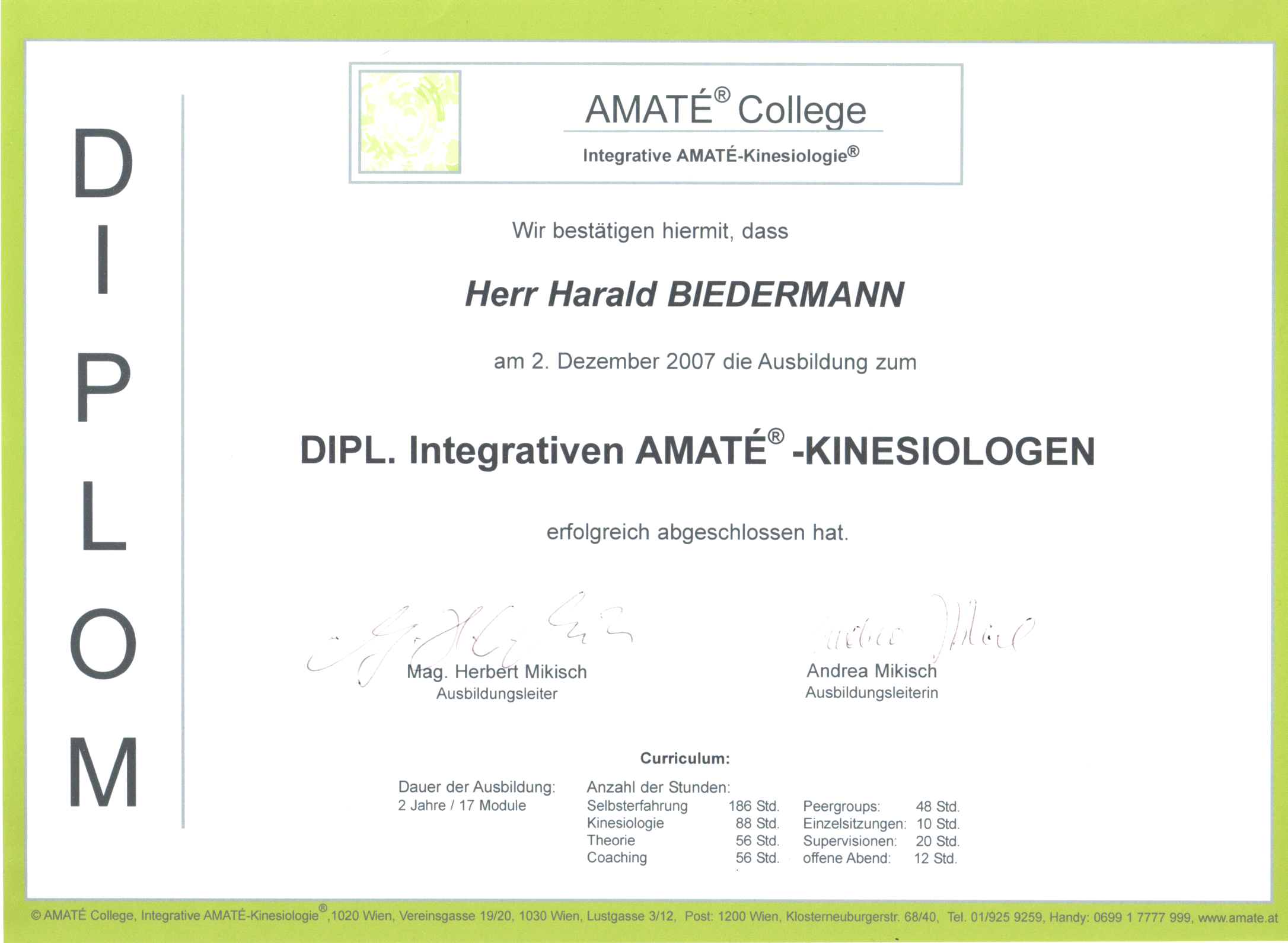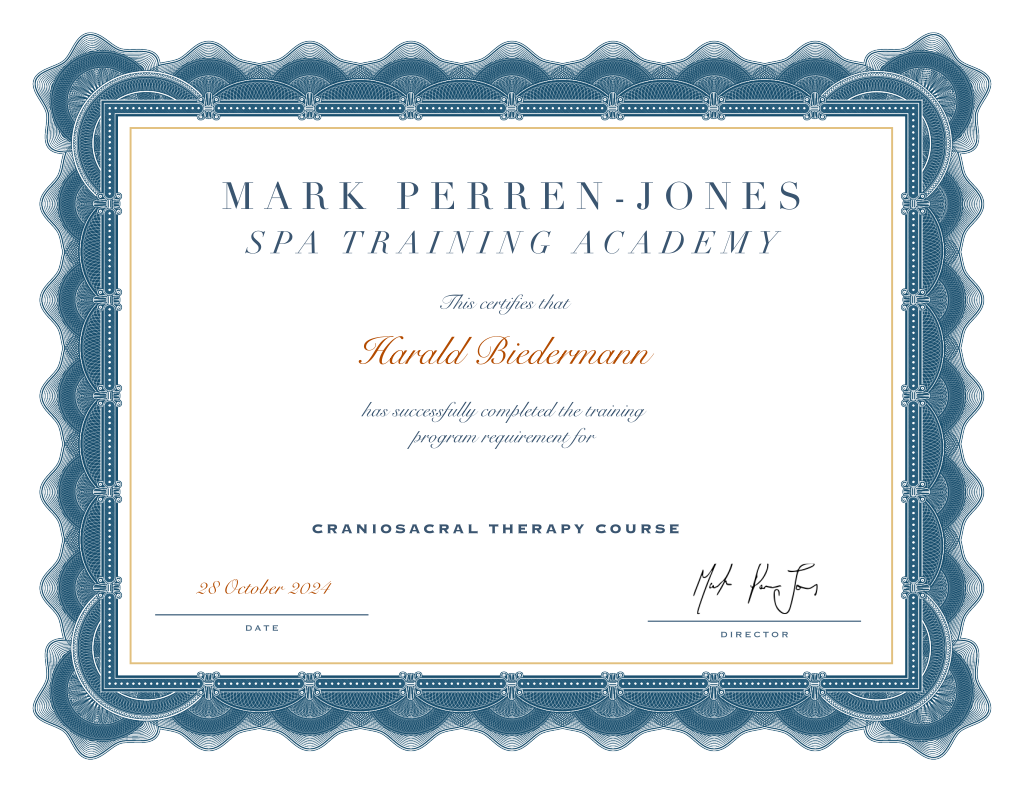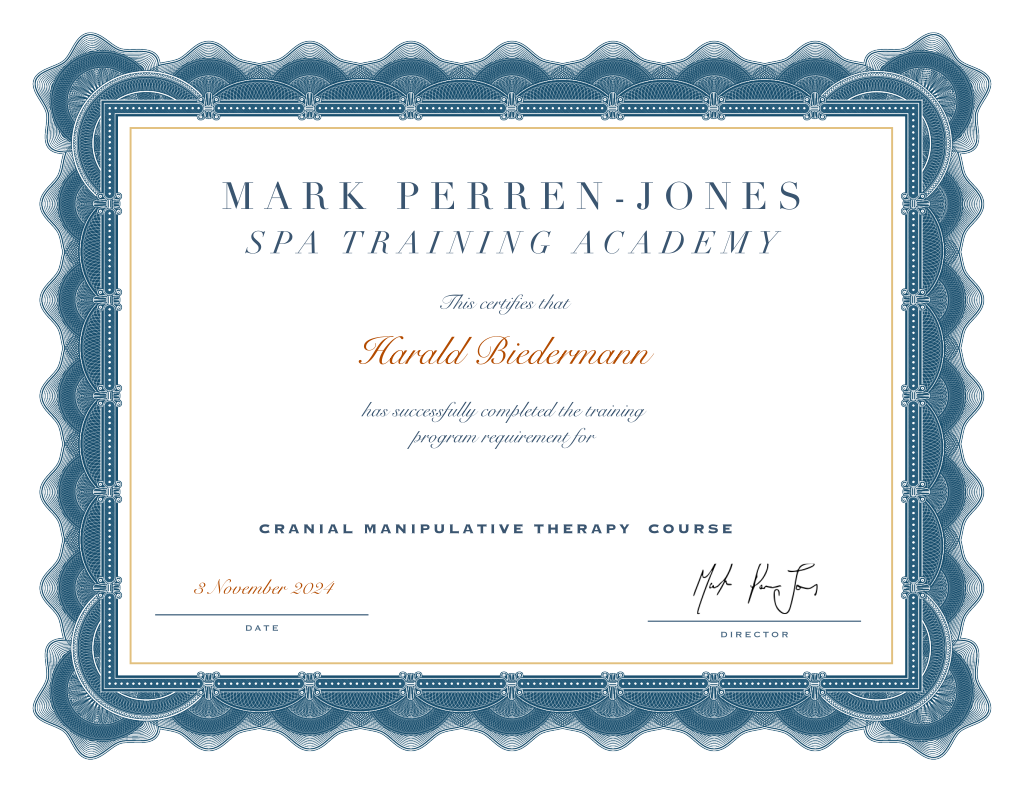Man(n) lernt nie aus
Aus- und Weiterbildungen

Ausbildungen im Bereich Kinesiologie
Mit Kinesiologie habe ich bereits 2005 begonnen. In hunderten von Sitzungen konnte ich zum Teil außergewöhnliche Ergebnisse beobachten. Heilung war möglich, obwohl die Methodik rein der Esotherik zugeordnet ist. Dies hat auch mein Leben als IT'ler sehr beeinflusst.
Das Zusammenspiel mit Berührungen in Massagen bringt allerdings wieder neue Dimensionen in die Behandlung.
Kraniosakraltherapie ist wohl auf einer ähnlichen Ebene wie Kinesiologie einzuordnen. Auch hier interessiert mich die Ergänzung von Energie (kraniosakraler Rythmus) zur Körperarbeit in der Massage.

Integrative Kinesiologie
Ausbildungsinhalt:
- System und Dynamik
- Partnerschaft und Beziehung
- Amagetik 1
- Erwachen und Sein
- IKA 1
- Amagetik 2
- Coaching 1
- IKA 2
- Geld, Beruf und Selbstwert
- Coaching 2
- IKA 3
- Grenzen der Kinesiologie
- Körper und Charakter
- Coaching 3
- IKA 4
- Coaching und Testing
- Prüfung und Abschluss
- Update Isolation und Segmentation

Craniosacral Therapy Course
Why Craniosacral Therapy for your Massage Clients?
-
Relieves Chronic Pain: CST helps alleviate headaches, migraines, TMJ disorders, Fibromyalgia, back and neck pain and much more.
-
Enhances Relaxation: Activates your parasympathetic nervous system, leading to deep, restorative relaxation. Help clients unwind on a deeper level, reducing stress and anxiety more effectively than traditional massage alone.
-
It Supports Overall Well-Being: Enhance your clients’ physical and emotional health by balancing the craniosacral system.
-
Orthopedic Problems: Scoliosis and other structural imbalances
-
Improves Emotional Well-Being such as Post traumatic Stress: Releases emotional tension stored in the body and promotes a sense of inner calm.
-
Boosts Your Immune System: By enhancing lymphatic flow and circulation, CST supports your body’s defense mechanisms.
-
Chronic Fatigue: Helps with chronic problems such as chronic fatigue
-
Supports Recovery: Whether it’s recovering from an injury, surgery, or stress, CST offers gentle support to accelerate your healing process.
-
And so much more!

Cranial Manipulative Therapy Course
What You Will Learn in This Course:
Cranial Anatomy and Function:
- Understand the key bones, sutures, and structures of the skull and how they move and interact within the craniosacral system.
- Learn about the reciprocal tension membrane system and how restrictions in the cranial bones can affect the entire body.
Palpation Skills:
- Develop the ability to feel and assess cranial bone movement and subtle restrictions using gentle palpation techniques.
- Learn how to recognize key patterns of dysfunction, like restricted cranial sutures and how to address them effectively.
Craniosacral Rhythm: (you will be taught but as already stated it's not necessary)
- Learn how to feel and evaluate the craniosacral rhythm and its importance in identifying areas of restriction or imbalance.
- Understand how to apply techniques that can restore and balance this rhythm.
Cranial Manipulative Techniques:
- Master Dozens of hands-on techniques for releasing cranial bone restrictions, including:
- Occipitosphenoidal Translation (Shunt)
- Occipital condyle decompressions
- V-Spread technique
- Temporal suture spring tests
- Hook Release Methods for the Sphenoid
- and many more!
- Learn both direct and indirect methods for addressing cranial restrictions.
Treatment Protocols for Common Conditions:
- Learn how to apply Cranial Manipulative Techniques to treat common issues like:
- Headaches and migraines
- Neck pain and tension
- Jaw pain (TMJ dysfunction)
- Sinus congestion
- Chronic stress and emotional tension
Integration with Massage Therapy:
- Discover how to incorporate craniosacral techniques into your existing massage practice.
- Learn to combine these subtle techniques with more traditional bodywork for enhanced pain relief, relaxation, and holistic healing.